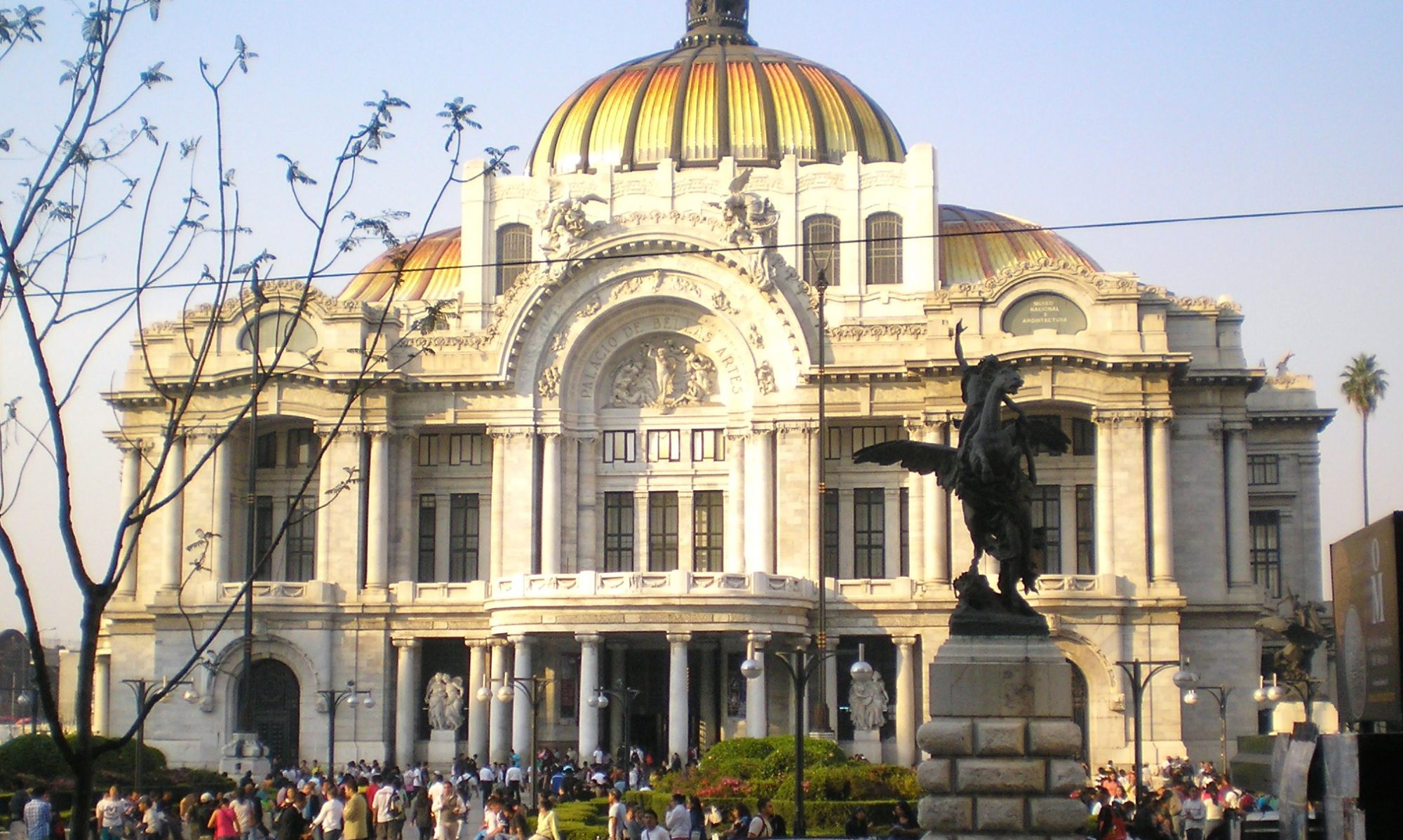
For opera novices and experts alike, John Cage’s Europeras 1 & 2 can be a disorienting, chaotic experience. In Europeras 1 & 2, chance procedures determine how the fundamental parts of opera—music, lighting, costumes, set design, synopses, and action—will unfold independently. One line of my notes from the LA Phil’s New Music Group performance last night, directed by Yuval Sharon, reads: “cowboy, astronaut, log cabin, marble columns, mom jeans, welding mask, Marriage of Figaro?”
In a venue change from the LA Phil’s usual Walt Disney Hall, the extraordinary performance transpired at Sony Picture Studios in Culver City. After waiting on benches in the parking garage, security ushered audience members in groups through metal detectors and through the alleys of other sound stages to Stage 23.
A plush red curtain rose to reveal a dancer under a green light on a stage mapped by an I Ching hexagram of 64 neatly numbered squares. His shoes were on the corner of square 8, and after a series of quiet movements, he retrieved them.
After that, it’s difficult to say what happened. This production boasts 19 impressive soloists ranging from sopranos to basses who sing excerpts from 50 different operas. Four small orchestral ensembles traverse parts of 63 operas separately from the soloists. There are six dancers and several stage hands who variously move props around primaries, such as a vintage vibrating exercise belt that malfunctioned fantastically for a brief moment when it caught on its gears. But the feeling that the performance can’t be summarized properly speaks to the success of this production, which is also how it calls an audience to task: the Europeras 1 & 2 are not about what happens as we know it in any conventional storytelling sense.
As a literary scholar interested in the way that music affects narrative perceptions of temporality in the twentieth-century novel, I have studied the score of Cage’s Europeras 1 & 2—a sweeping array of possible narratives—with dumbfounded curiosity. An insert in last night’s program listed two synopses, one for each half of the program. But even these appear as plot crumbs of operatic essentialism. The second synopses, for example, reads: “On a public bench, he falls in love; however, her father, an evil magician, died, giving birth to him. He is in fact his son, her delight.” For those who grew up listening to opera, the barrage of familiar arias will feel like a bizarre pub quiz where your team is straining to identify phrases in the midst of so many other things. Walking out, the New Yorker’s music critic Alex Ross asked me if I’d caught whether the chef on skis had been singing one of Benjamin Britten’s operas. (I hadn’t.)
More than once, I was reminded of Robert Ashley’s statement that it is silly to think that opera—any opera—can have a plot. But now I’m beginning to think that is only true because Europeras 1 & 2 accesses a deeply unfamiliar kind of storytelling, foreign to narrative theory in literary circles but also to the everyday human experience of piecing together sequences to make sense of the world. The woman sitting next to me walked out at minute 81 of the first Europera whispering, “I’m so sorry, I just can’t take it anymore.” But others laughed out loud and, at its close, gave the performance a warm standing ovation. It is a deeply serious composition, but to be serious does not mean foregoing joy.
It is, perhaps, a rabbit hole venture to look for the story in it. Though a curtain rose and fell during the performance, the stage is open to the eye, a transparent assembly of props, lights, and ropes. Two digital clocks flanked the opposing walls, counting off events pre-determined through chance operations. I spotted a piñata standing on a prop table stage left and waited impatiently for its appearance (it finally made its debut in minute 33 of the Europera 2 to a fragmented “Flight of the Valkyries” accompaniment). There was glitter, netting, knitting, rubber anvils, a casket, a karate kid, Genghis Khan, and a white toilet. I would look up from my notebook, and suddenly the scene had changed to a sand castle, a roman soldier serenading a cauliflower, a starlet cradling a severed head, a soprano singing on a yoga mat in downward dog. The Europeras 1 & 2, as with everything Cage wrote, is something altogether undiscovered—and a supremely beautiful expression of what it is to be human.
